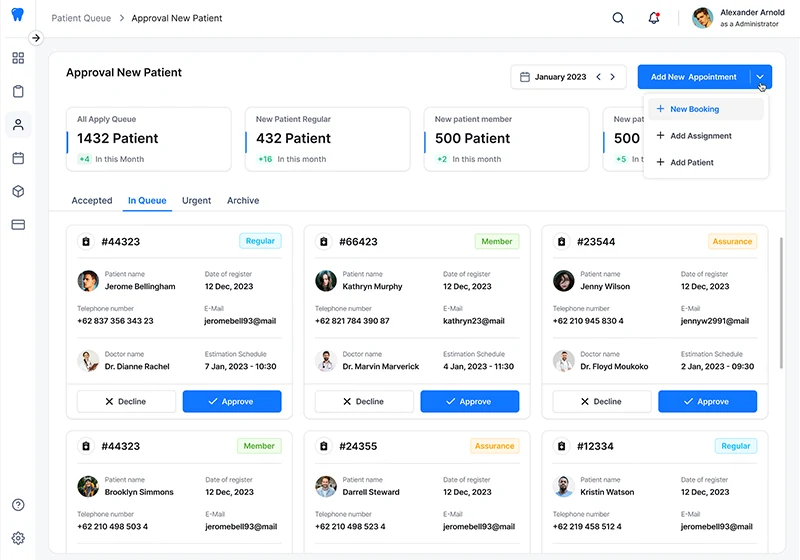CRM SaaS Solution for a Growing E-commerce Platform
- E-commerce
- Saas
We helped a healthcare institution in the United States to help them build and deploy a highly efficient electronic healthcare record system. The client struggled with a manual record-keeping process that lacked accessibility and regulatory compliance. Our team designed an EHR solution that brought 25% improvement in regulatory compliance while enhancing accessibility to patient records by 50%.
The client is a renowned hospital in the USA with a capacity of 1000 beds and multiple health specialists under one roof. The hospital has been a medical hub for people from 10+ cities for more than 50 years. The traditional patient management system turned inefficient as the number of patients increased in the recent decade. The manual tracking of patient data caused accessibility challenges, while manual record keeping often caused human errors that compromised the efficiency of the patient care plan.
After the thorough analysis of client challenges and hospital requirements, we envisaged a smart electronic health record system that centralizes end-to-end patient data in one place. The software would be designed on a cloud platform that allows patients and healthcare professionals to easily access their entire medical history with just a click. The strategic planning also ensured the software capability to integrate with different types of medical devices that actively help to update patient medical data.
We collaborated with the team of senior healthcare professionals to have a better view of real-time challenges. In order to build a solution that aligns with client goals, we curated a personalized list of features and technologies that help build an advanced EHR platform. We deployed an agile project management methodology that helps to divide the entire project into sprints and ensure the defined quality standard throughout the process.

The client hospital mainly struggled with random, scattered data that impacted the accessibility of medical data about the patient. The manual handling of data often caused human errors that impacted the efficiency of treatment plans. At the same time, the evolving regulatory changes in the medical industry turned the legacy system incompetent to ensure compliance. Furthermore, the existing tech infrastructure of the hospital lacked scalability according to changing industry trends.
Since the deployment of the EHR SaaS solution, the firm has reported a 30% improvement in patient care efficiency. The access to patients’ records for healthcare professionals has increased by 50%. At the same time, it is now 25% easier for the hospital administration to keep track of evolving regulatory compliance and ensure adherence.
| Milestone | Tasks | Timeline | Responsible |
|---|---|---|---|
| Project Initiation | Project workshop, budget, and resource allocation | Month 1 | Project Manager |
| System Design and Prototype | Curate EHR system architecture, database scheme, and prototype development | Month 2-3 | Solution Architect |
| Development and Model Training | Build EHR module, AI integration, cloud integration | Month 4-7 | Development Team |
| Testing and QA | Unit testing, performance testing, automated testing, and manual testing | Month 8-10 | QA Team |
| Deployment | Data migration, post-launch monitoring, and creating a user manual | Month 11-12 | Project Manager, IT Team |